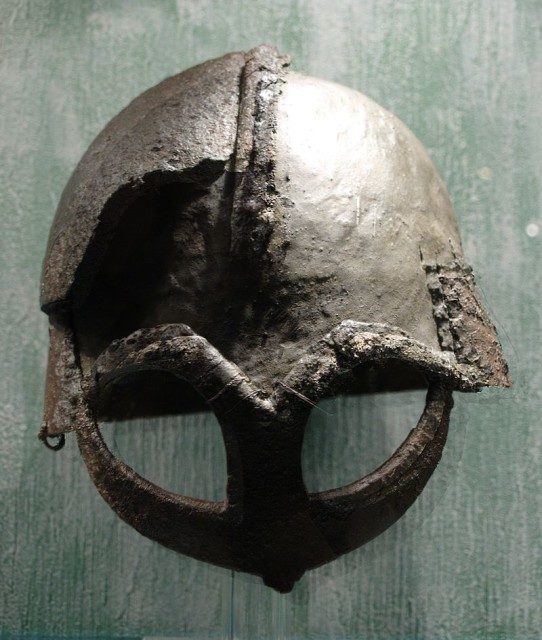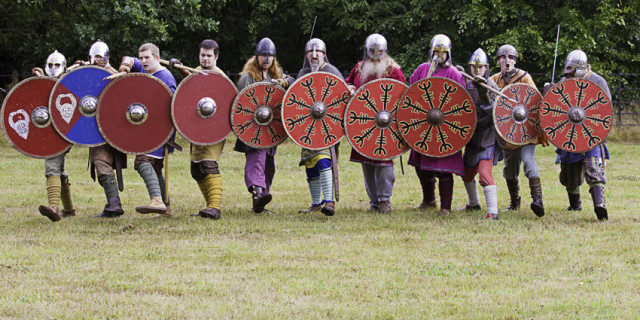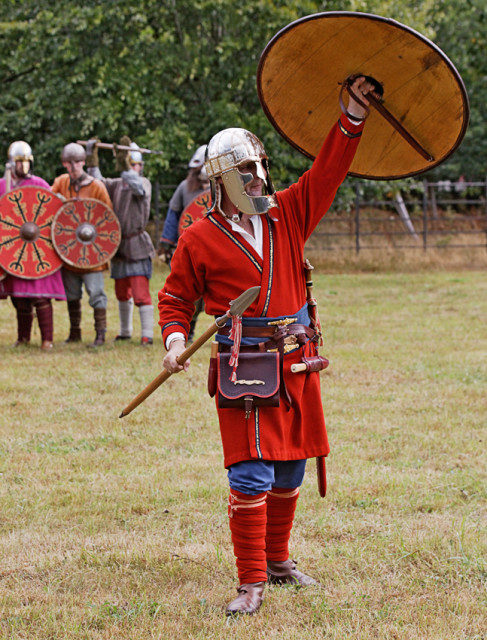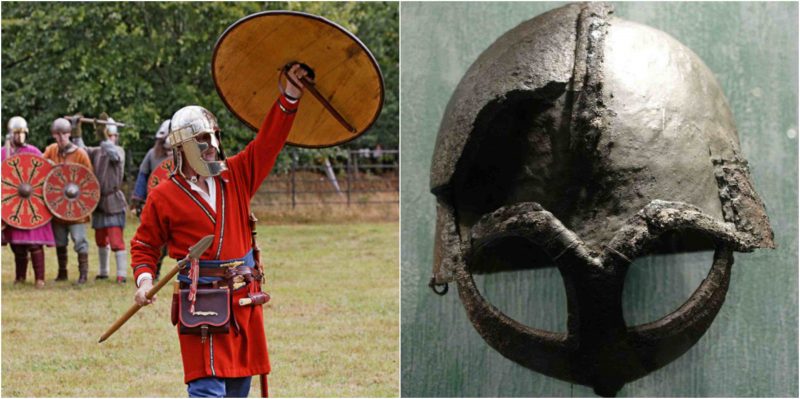Almost every young boy has worn a Viking helmet complete with horns and swished his toy sword around as he fought all comers in the back yard. Sadly, the concept of Vikings wearing helmets adorned with horns is not true and is a figment of the imagination of the Romans.
Up to 1943, no Viking helmet had ever been found, but on the 30th March of that year, a burial mound was found on a farm near the village of Haugsbygd, in the northeast of Hønefoss, Norway. At this time the country was under Nazi occupation, so everything found in the burial mound was loaded into wheelbarrows and hidden in a barn. Discovered within the mound was a helmet, known as the Gjermundbu helmet after the name of the farm on which it was found. As well as the helmet there were the burnt remains of two men along with a rich haul of funerary items such as chain mail armor, three axes, three spear heads, three swords, one of which was decorated with silver inlays, four bulges for shields, equestrian equipment and games such as dice.

Over the past 70 years the funerary items have been studied, and to this day the helmet found in the mound is unique in the archaeological world. It has been positively dated to the 10th Century, around 970 AD, but this very special helmet is the only example of a Viking helmet that has ever been found anywhere in the world. Researchers believe that one of the men buried in the mound was a minor king and that the helmet belonged to him.
The helmet was found in nine pieces which gave archaeologists an insight into how it was constructed. The Viking metalworker had created a metal frame upon which he could hang all the pieces.
There was a rim, similar to the rim of a modern hat, and two strips that went from front to back and from ear to ear. He then riveted four metal plates onto this framework and created a covering for the head.
He added a decorated eye-piece, which protected the face and nose. It is suggested that the sides and back of the neck were protected by chain mail and that the helmet originally sported a spike on the top of the head and a leather chinstrap.

As with many archaeological discoveries, there are many theories about why Viking helmets are practically nonexistent. One of the most common is that helmets were reserved for high ranking individuals such as royalty and perhaps their personal guard, so there were very few of them. Another theory is that helmets were passed from father to son until they were so damaged that they were melted down and turned into something else. Yet another is that iron helmets were simply too heavy and too expensive and did not suit the Viking style of warfare, and were primarily worn for ceremonial purposes.
Illustrations of that era do show the Vikings, in their long boats, wearing a type of peaked hat. The popular theory about this is that the hat is not a helmet but rather a leather hat that was worn as protection against the cold. The Vikings were fearsome warriors, and their reputation and fighting ability was feared across most of the civilized world.
A heavy iron helmet would have got in the way of their fighting style. In addition, heavy helmets would have taken up a great deal of room in their long boats, space better used to carry supplies and trade goods. Also, the added weight would not have been welcome when having to row.

It is fascinating to speculate on why no helmets have been found that positively date back to this era. The Gjermundbu helmet is on display at the Museum of National Antiquities in Oslo.
We can only stand and stare at the spectacle-like eyepiece and wonder at the man that wore this amazing piece of headgear, who he was, what his life was like and why did he, out of all the Vikings, have such a dramatic helmet?
